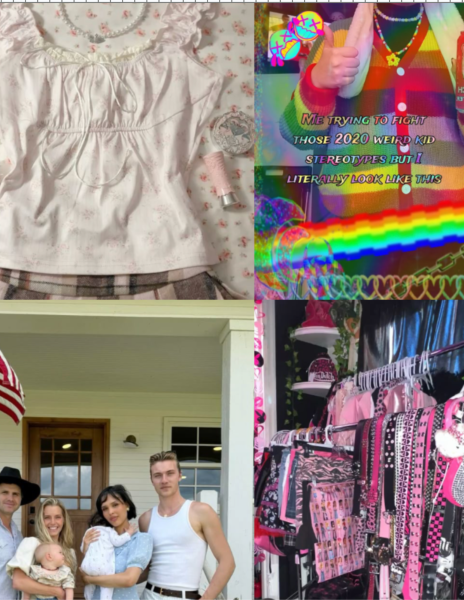Why It’s Best To Leave the Dress Code Unmentioned
Ambiguous and problematic, the dress code ultimately does more harm than good.
Last week, in an episode of student government’s “Hellgate Happenings,” Principal Miller took his place behind the camera and reminded students to obey the district’s dress code. The message quickly garnered more than 500 views on Youtube and created significant controversy. Many students have criticized the video and protested the dress code in response. I believe these protests are entirely appropriate and I think the reminder sent the wrong messages to students.
To be clear, there are certainly boundaries for what is and isn’t appropriate in a school setting. Clothing with violent or offensive messages should certainly not be allowed. But when it comes to whether “excessive skin” is shown, the line between what passes and what doesn’t is very blurry. Because of this, factors such as body type often come into play, affecting the enforcement of the dress code more than they should. I believe these unintentional biases create more harm than the dress code ultimately prevents.
Dress codes that prohibit “distracting” clothing are inherently sexist. In a clarifying email about his message, Mr. Miller wrote that wearing “swimsuit tops/bras, tank tops, short shorts” and other items to school can be disruptive “no matter the gender.” But these are all female items of clothing. How many boys find themselves looking at racks of tank tops and short shorts? When you look at the female clothing industry, it’s not surprising that females wear clothes with “less coverage.” (The only time I’ve seen males wearing short shorts or swimsuit tops is when they are protesting the dress code.)
Regulating what women are wearing, and labeling them a “distraction” if their clothes don’t meet an arbitrary standard, leads to self-consciousness and anxiety. Women face a double standard, forced to conform to both the pressures of society and the often outdated dress codes of their school or workplace. And it shouldn’t be their responsibility to dress in a way that keeps other people focused. That only furthers the idea that if a woman receives unwanted attention – or even experiences something as extreme as sexual assault – it’s her own fault because she was “asking for it.” Anything we can do to eliminate that narrative and hold people accountable for their own actions is extremely important.
Dress codes have not just been demanding attention at Hellgate. In March, the Montana legislature advanced a resolution strengthening the dress code standards in the chamber, requiring men to wear a suit and tie and women to wear either “dress slacks, skirt, jacket and dress blouse or suit-like dress.” The code was intended to encourage respect but was criticized by many Democrats, who argued that “sincere representation” is not determined by what people wear. I agree with this reasoning and believe it holds true in a school setting as well: I don’t think a focused, productive learning environment is created, or even affected much, by people’s clothes. In the rare case that an outfit really is distracting, it’s just a reflection of what students will at times have to deal with in the real world.
The most frustrating aspect of the state legislature’s new dress code, though, was its timing. We were in the middle of a pandemic, facing a plethora of social, racial, and environmental problems, and the legislature decided to put their effort into a dress code. We only have so much time and energy and need to be focusing on more important things.
This is ultimately what bothers me about the dress code message as well. Several racist social media posts in the past month have revealed that our school district has more to deal with than a dress code. And while neither of the incidents came directly from Hellgate students, they prompted discussions about the ways our school needs to strive to be more diverse and inclusive. I wish that there had been more communication among both administrators and students about how we can better our school community and prevent those situations in the future, rather than the current uproar about something as insignificant as a dress code.
I understand that the dress code is a difficult issue, and I agree with Mr. Miller that it’s hard to enforce “ambiguous social norms.” The lines are blurry, and attempts to clarify them will inevitably lead to conflict. Because of that, we should consider whether they are really worth worrying about in the first place.
Maybe it would be beneficial to give students more influence over these issues. If students were at least somewhat involved in determining the dress code it wouldn’t feel like teachers or administrators are scrutinizing what people are wearing and there wouldn’t be so much conflict when the dress code is brought up. I think if there are consistent violations of the dress code, it should be students who raise the issue. As a school, we should be building a culture where students are responsible for encouraging the type of environment they want to be a part of. Judging from the student response to Mr. Miller’s message, the majority of students don’t feel the dress code is an issue.
Words like “distracting” should be removed from the dress code. Collectively, students and administrators should rewrite the reasoning for the dress code in a way that they feel truly represents their feelings and doesn’t allow for unintentional biases. But ultimately, there are so many things that are more important than an article of clothing. I’m appreciative that up until this point, the dress code has gone largely unmentioned. We should try to make sure that it stays that way.

Hello! I'm a Senior at Hellgate and this is my second year writing for the Lance. In addition to writing, I enjoy mountain biking, playing cello, and competing...




